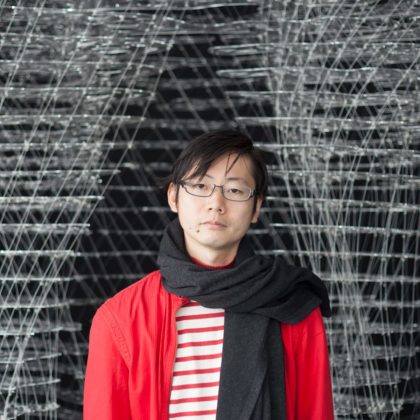What are the invisible lines that bind us together? What information is passed between us without our being aware of it? What extraordinary latent ‘intelligence’ do we fail to access and develop? Swarming and synchronization as a phenomenon is an undeniable force in nature, yet escapes our understanding of even our own tendencies towards synchronization and patterns.
Warming up together in a church renovated into a giant trampoline park, we will meet each other while bouncing in space, through various games and activities, exploring basic principles of synchronization and random patterns.
A simple lunch, coffee and tea will be provided to all workshop participants.
Computational design provides a myriad of forms and patterns that resemble natural processes and that have redefined the way we look at the world today. This workshop will meditate on the beauty of emergence out of step-by-step rules, the limitations of movement in the real world and the difficulty of following strict rules without being interfered by human instinct and intelligence – which in turn reveals the mechanism of instinct and how intelligent we are.
Departing with a session of agent-based computational design on Processing – simulating and exploring rule based behaviors and emergence in software- we will go further with choreographic experiments reflecting upon algorithmic systems and social relations. Inspired by computer simulations, we will create situations to rethink the mechanisms of interacting with people and environment, and explore how individual or collective entities may affect a system. Expect both mental and corporeal endeavor, with playful actions and mesmerizing results.
We recommend you to bring a laptop, if possible with Processing already installed (free download here), as well as comfortable clothes and sneakers. No previous experience on computer programming or dancing is required. Being familiar with programming languages is good; having a body knack is a plus.
Swarm formation used by Satoru Sugihara for the Gem of Lives structure.
Workshop
Date
November 30
Time
10:30 – 12:00 – Trampoline jumping with Ludmila @ Planet Jump
12:00 – 13:00 – Lunch and moving to Quartair
13:00 – 18:30 – Workshop: Agent-based Choreographic Tactics
Venues
Planet Jump
Quartair
Module
MBF x DEZACT
Workshop
Weblinks
Satoru Sugihara
Ludmila Rodrigues
Gem of Lives @ MBF
The Grotto
Processing software
BIOS

Satoru Sugihara (US/JP) is a leading computational designer working in the field of architecture, and a faculty member at Southern California Institute of Architecture. In 2012 he founded ATLV, a computational design firm based in Los Angeles. The studio pushes the boundaries of practice and research in contemporary architecture and spatial design, employing algorithms alongside electronic hardware and robotics to seek broader ideas of design, fabrication, and process. Prior to ATLV, Satoru worked as a computational designer at Morphosis Architects engaging in large-scale construction and research projects, and as a researcher in media art and interaction design. He is also the developer of open-source 3D computational design software iGeo. Satoru holds a Master’s degree in Architecture from University of California Los Angeles and a Master’s degree in Computer Science from Tokyo Institute of Technology. He has taught at Architectural Association’s Visiting School, the University of British Columbia, Ecole Nationale Supérieure d’Architecture de Paris-Malaquais, Woodbury University and Tokyo University of the Arts.

Ludmila Rodrigues (NL/BR) is an artist, performer and designer fascinated by human interaction, non-verbal communication and tactile experience. Her works materialize in installations, sets and situations where visitors become actors in a shared, collective exploration. Ludmila has a degree in Architecture and Urban Planning by the Federal University of Rio de Janeiro, Brazil, and in Arts by the Artscience Interfaculty, KABK, The Hague. Born in Rio, based in The Netherlands since 2009, Ludmila continues her practice by learning diverse physical techniques to develop body awareness and enrich human communication through her works. Her theses ‘The Body of the Audience’ on the engagement of the public and the relationship between art and audience, has been published by Lambert Academic Published in 2015.

